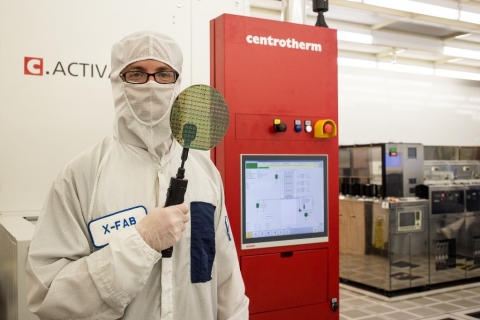Oct042016
Posted at 11:05 AM
Guest blog post by Dr. John Muth, Deputy Director PowerAmerica
The power revolution is coming, and fast. The market for wide bandgap power electronic devices – which enable energy savings amounting to hundreds of gigawatts in many different economic sectors, including electric vehicles, industrial motors, solar and wind farms, and data centers – is expected to grow about 33 percent per year as awareness spreads about the large energy savings and system-level advantages that can be obtained with this technology. Ultimately, access to clean, inexpensive, reliable energy is central to the U.S. economy, job creation, and a high quality of life for people.
At PowerAmerica, our mission is to accelerate the adoption of wide bandgap semiconductors made with silicon carbide (SiC) and gallium nitride (GaN) into power electronics. We must continue to build on the investments and technical achievements that have brought us to this point, where we are poised to capitalize on and grow this clean energy technology. How do we do this? Events like National Manufacturing Day help with this goal by facilitating dialogue and collaboration between industry, academia and government, while informing students, trade organizations and the community at large of opportunities for the future. These relationships form the backbone of the ecosystem that is needed to support the adoption of this technology.
Building a Manufacturing Ecosystem
To draw an analogy, biologists talk about ecosystems and food webs, and try to understand what is necessary for the plants and animals to survive and thrive. In our field, the “plants” are factories making wide bandgap semiconductor chips, and we are trying to help build a “food web” –or manufacturing supply chain - for companies and their workers to thrive and grow in a complex, competitive global environment.
The PowerAmerica supply chain includes a wide array of industry members, from start-ups of a few people innovating with emerging new technology to huge multinational corporations with large research departments, marketing teams and factories – in addition to students, teachers and community college instructors who work together and with industry to build a common future vision. The exchange of ideas and technical expertise, relationship building, business partnerships, industry collaboration and shared access to a future workforce form the PowerAmerica ecosystem.
Our National Manufacturing Day celebration will represent a microcosm of this ecosystem, as representatives from the Departments of Energy and Commerce, state economic development, nonprofits such as the Research Triangle Clean Tech Cluster, university officials and industry members gather together to exchange ideas and share information about opportunities in advanced manufacturing.
The Supply Chain in Action
As mentioned previously, a healthy ecosystem is dependent on a cohesive food web – or supply chain – to help plants and animals (or industry, in our case), thrive. At PowerAmerica, one way we have worked to establish this supply chain is through a project to retrofit an existing factory.
In the U.S., about 70 six-inch silicon foundries (factories for making silicon chips) have closed since 2000, causing hundreds of workers to lose their jobs. PowerAmerica helped reconfigure the equipment at X-Fab, a 400-person foundry in Lubbock, Texas to be able to fabricate power electronic devices made from the more energy-efficiency silicon carbide, rather than silicon. Today, six U.S. companies are using the factory, with companies in Asia and Europe also expressing interest.
This innovation creates a new business model that helps sustain jobs at the foundry, and also creates opportunities for other companies across the U.S. by substantially reducing the economic barrier to market entry. Since U.S. companies can now more easily design and make silicon carbide devices in the U.S., they can more easily get into the rapidly growing wide bandgap power electronics market. Other benefits are emerging, too. Smaller companies using the foundry are receiving external investment and now have the ability to work with large companies using wide bandgap in their products. Similarly, large companies using wide bandgap semiconductors are finding new technology opportunities and designing new products that are smaller, lighter and more energy-efficient. This makes companies with U.S. manufacturing presence more internationally competitive, bringing us closer to the Manufacturing USA goal of reinvigorating manufacturing in this country through clean energy technology.




